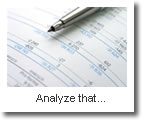White Paper - "Trading Seasonality" - Introduction
Introduction
What Is Seasonality?
The Yearly Seasonal Cycle
Seasonality Zonestm
Seasonal Heat
Seasonality And Other Instruments
Deploying Seasonality As Part Of An Overall Strategy
Conclusion
Wall Street research is fraught with techniques to aid traders and investors in the pursuit of the Holy Grail a set of indicators that will guarantee a steady return. Some of these techniques truly add value, some don't. The problem is that the stock market is a non-linear environment; the factors that influence price action are complex. No single combination of factors exists that perfectly repeats over time. Like life, the factors that influence stocks have infinite possibilities. It is up to each trader to determine which factor to value in the decision making process (a fact that in and of itself adds to the non-linearity of price action.)
Most of Wall Street research indicators are linear attempts to solve a non-linear problem. Some try to turn one factor into a science. Others look at so many factors that any value is lost by the effect of diminishing degrees of freedom. The trader must therefore decide which factors are of most value. We choose factors that are primarily of a technical nature. Technical analysis is research derived from the action of the marketplace itself. The types of technical indicators we use include those derived from price action, volume changes and sentiment. We value those factors that are independent of other factors, have a reasonable degree of correlation to price action, and that successfully repeat over time. Perhaps the most misunderstood and least used of these factors is seasonality. Over the years the more we have used seasonality the more we have come to value it as a primary factor in our decision making. Here's why.

